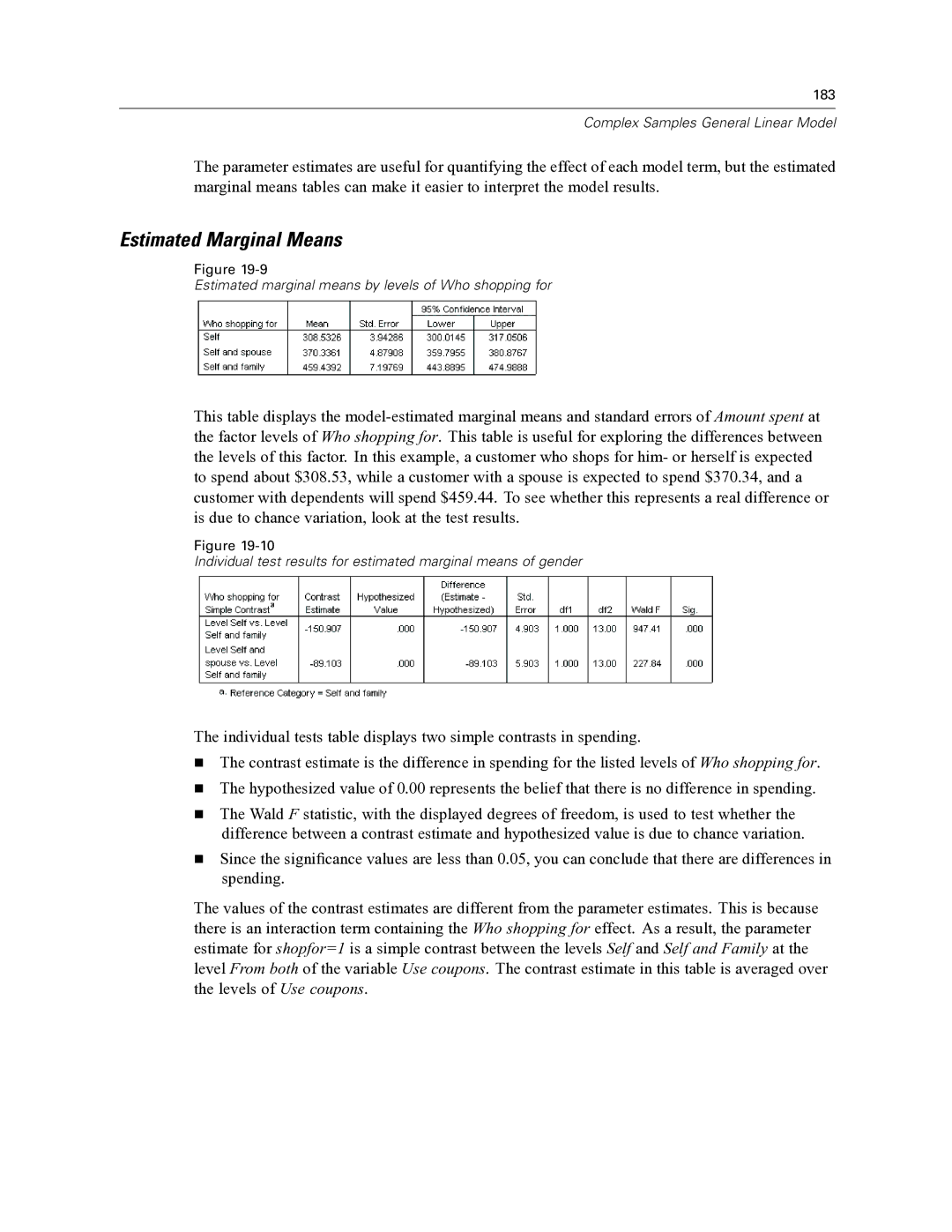
183
Complex Samples General Linear Model
The parameter estimates are useful for quantifying the effect of each model term, but the estimated marginal means tables can make it easier to interpret the model results.
Estimated Marginal Means
Figure
Estimated marginal means by levels of Who shopping for
This table displays the
Figure
Individual test results for estimated marginal means of gender
The individual tests table displays two simple contrasts in spending.
The contrast estimate is the difference in spending for the listed levels of Who shopping for.
The hypothesized value of 0.00 represents the belief that there is no difference in spending.
The Wald F statistic, with the displayed degrees of freedom, is used to test whether the difference between a contrast estimate and hypothesized value is due to chance variation.
Since the significance values are less than 0.05, you can conclude that there are differences in spending.
The values of the contrast estimates are different from the parameter estimates. This is because there is an interaction term containing the Who shopping for effect. As a result, the parameter estimate for shopfor=1 is a simple contrast between the levels Self and Self and Family at the level From both of the variable Use coupons. The contrast estimate in this table is averaged over the levels of Use coupons.
